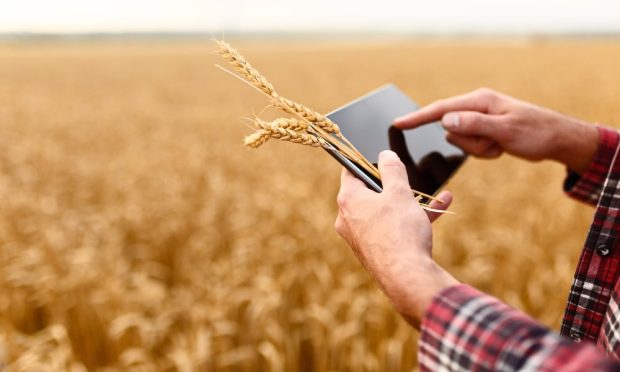Why Farmers Now Care About Hedging Currency Risk

Farming has always been about risk. Bad weather, infestation, speculation: Such factors can not only mean survival or failure for farmers, but impact food prices and the larger global economy without any effort at hedging or risk management. That’s to say nothing of the risk associated with currency fluctuations — a persistent worry, to be sure, but one that’s increasing, thanks to such factors as a strong U.S. dollar, trade wars and global political tensions.
In a new PYMNTS interview, Karl Schamotta, regional director of risk management solutions at Cambridge Global Payments, talked about managing risk and hedging currency fluctuations in, perhaps, the world’s oldest form of production and commerce — a job that’s become more difficult in recent years, even with the benefits of digitalization. The company sells currency hedging and related services, tasks that have recently assumed greater importance in eCommerce and other industries because of the stronger U.S. dollar and other factors.
Increasing Volatility
Don’t expect those factors to stabilize anytime soon.
“We’re seeing more economic and political volatility than we’ve seen in a long time, along with a lot of trade concerns,” Schamotta said. “The environment is a lot more unpredictable.”
Past periods that may offer some guidance to riding out this current period of volatility, which he and other experts anticipated will last years, are the late 1990s — another strong period for the U.S. dollar, with economic chaos in emerging markets — and the early and late 1970s, he said.
Farmers have always dealt in uncertainty, of course.
Droughts, storms, insect and microbe infestation, war, economic depression, floods — historically, these things would make the difference between feast and famine, and still pose existential threats to agricultural operations and larger economies. Supply cost changes and marketplace fluctuations caused by events that happen in different time zones or continents can bring ruin to farmers, farming towns and other populations.
In recent decades, production and consumption habits have changed around the world. New trading technology — software, trading algorithms and faster ocean cargo ships — has opened previously inaccessible markets to speculators, driving a sharp rise in commodity price volatility. Fewer people may starve than was the case in centuries past, but agriculture is still a roller-coaster ride, especially in an era of a rising global middle class and emerging trade wars that target a wide variety of commodities.
Risk Appetite
Agricultural operators are used to taking risks, Schamotta said, but they could do well by taking a lesson from the corporate sector when it comes to currency hedging and other forms of risk management.
“Corporates tend to be more pragmatic and take risk off the table,” he said. That doesn’t apply to all corporate, non-agricultural operations, of course. One reason for the new focus on hedging and financial risk management in eCommerce is the admission by Netflix, during its second quarter 2018 earnings release, that the company failed to “hedge its revenue with derivatives,” which led Netflix to lower its 2018 operating margin expectations to the lower end of its projection of 10 percent to 11 percent.
Better examples are out there, though.
“Agriculture needs to take a leaf from the playbook of large corporations,” Schamotta said. That holds especially true given the increasingly fierce global competition in agricultural commodities, with “small producers competing against some of the biggest in the world.”
Ahead Of The Game
Some of those big players are, indeed, family-run operations, which can be larger than corporate-operated farms, he said. Most farms are ahead of the game, using digital technology to make payments and associated tasks more efficient than would be the case with paper. Unsurprisingly, though, some legacy organizations still rely on paper-based processes, as well as visiting bank branches in person to handle transactions and other financial matters, he said. However, it’s pretty challenging to succeed in agriculture without executing transactions online, given the software-enabled modern speed of trade.
Even with digital prowess, farm operators still often misjudge how much risk they have to manage. That holds especially true for these current times. A common assumption is that farmers, used to the rollercoaster ride, tend to think the current level of volatility will be relatively brief. They think “currency levels will eventually come back to foundational levels,” he said. “The reality is that exchange levels can deviate from the fundamentals for years at a time. That can devastate your operation.”
Agriculture might be something most people think about when driving through or flying over farm country, but Schamotta offered a reminder about how important the industry is and why it is vital for the industry to manage financial risk.
“Food prices are typically the tip of the spear,” he said. “If you see rapid changes in the food prices, that often serves as a canary in the mine.”
